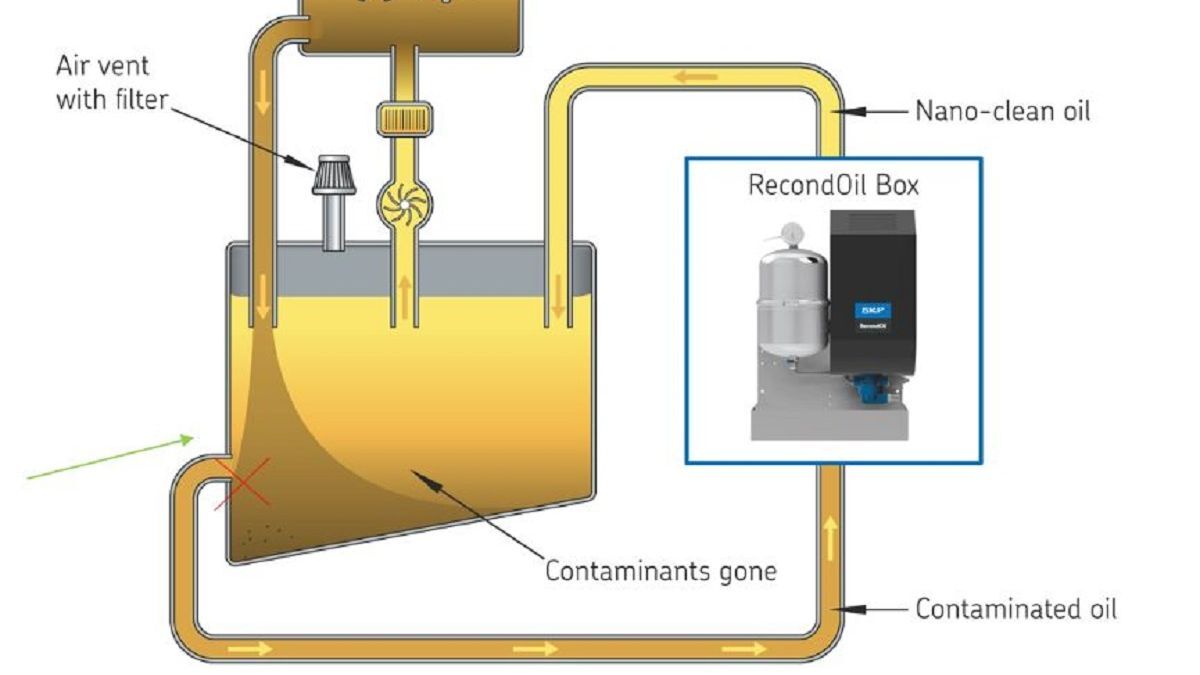In the Double separation technology: next-generation filtration for circular oil use on vessels webinar, it was revealed recirculating oil can achieve very high standards of cleanliness
The Double separation technology: next-generation filtration for circular oil use on vessels webinar, sponsored by SKF, took place 30 August 2022 and featured SKF sales and business development manager Mats Norling, CC Jensen global segment manager Kim Kjær, and SKF Cassino factory manager Giovanni d’Agostino.
The webinar examined the latest technology available in oil recirculation. All vessels require oil to lubricate moving parts, and methods to clean oil and reuse it have been around for some time.
Like other areas of marine technology, equipment is improving all the time, but as Mr Kjær explained, an inline filter is there to immediately protect the component, but an offline filter has a different role.
An offline filter cleans the recirculating oil, but the industry has issues when it comes to offline filters, “There is no standard for benchmarking or to improve your own product for offline methods,” said Mr Kjær, “Therefore, we created our own methods to keep us on track, but also to benchmark different technologies.”
This includes removing impurities, varnish and water, to name a few tasks. Measuring these tasks is a challenge as without a standard, there is a myriad of measurements and resulting data. He noted, “It is important to have proof the efficiency, the beta, the particle and the micron rating is the same or is degraded as little as possible during the lifetime of the element.”
He concluded, “Technology will help us save the planet – not marketing.”
Mr Norling took a different angle, noting that oil has changed from being a consumable to being an asset and the marine sector has moved on from simply specifying the oil has to be changed after X number of hours.
Today, SKF double-separation technology (DST) can remove particles at the nano level, “We have a chemical booster that attracts particles and clumps them together,” he said.
These are absorbed into the filter. Observation and monitoring controls the chemical booster and filter. “We do not need to replace the oil as much as before, and in some cases, we do not need to replace the oil at all,” he said.
The DST maintains three functions: removing nano particles, removing varnish and removing bound and free water. A bonus is that less oil to replace lowers the carbon footprint.
Mr d’Agostino presented an overview of the practical use of DST. He is general manager of a 50,000-m2 ball bearing factory employing 400 people which produces 500,000 ball bearings a day.
In 2019, recirculating oil technology was installed in the factory to recirculate 50 m3 of Castrol Honilo 980 oil, which is used to hone the raceway of the bearings. He said the recommended filtration capacity is 7.2 m3 per day with a 16-hour cleaning cycle.
After two years of operation, the results are very positive. “We observed a reduction of the contamination from 4.8 mm per litre to 3.4 mm per litre,” he said.
By way of comparison, he noted, “Brand new oil has a dirt content of 2.8 mm per litre” but DST has surpassed this, “We had several months of the DST running at 2.5 mm per litre of contamination, which is even better than clean oil.”
Webinar poll results
What approximate temperature does varnish precipitate in the oil as particles?
0°C: 13%
20°C: 29%
40°C: 25%
60°C: 21%
80°C: 12%
Would the circular use of oil support your goals towards reducing carbon emissions and other sustainability goals?
Yes, this is a perfect fit: 48%
No, this is not what will make a difference: 4%
It’s not the key activity but it will help: 48%
Does your company have an oil maintenance strategy to reduce contamination and increase oil cleanliness?
Yes: 52%
No: 15%
Ad-hoc: 33%
What do you see as the biggest gain when replacing 2- and 4-stroke engine LO purifiers with filters?
CO2 reduction: 4%
Saving operational costs – oil, energy and purifier spares: 58%
Simplicity and less maintenance for crew: 22%
I do not have to trust the crew to operate the purifier correctly: 4%
Engine maker’s recommendation: 12%
Do you quantify vessel maintenance costs in relation to lubrication issues?
Yes: 56%
No: 6%
Ad-hoc: 38%
Do you monitor your oil related costs at /fleet levels?
Yes: 76%
No: 5%
Ad-hoc: 19%






